25 Best Things to Do in Istanbul
From historic squares to the Grand Bazaar, there's much to do in the Turkish metropolis.
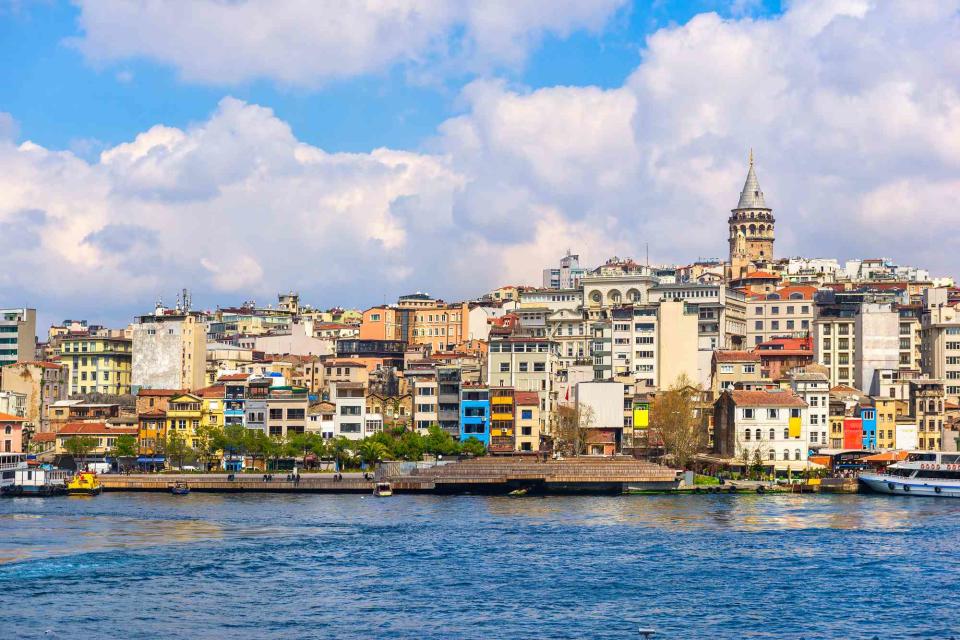
Kateryna Kolesnyk/Getty Images
Surely there has never been a dull moment in Istanbul. An imperial capital for 1,700 years, the metropolis has long stood as a gateway between the East and West, and that has made it a hub for crossing cultures, religions, ideologies, and cuisine. And the legacy of the city — formerly Constantinople — has withstood the test of time.
"It is a city with an incredible depth of culture, and history like no other," says Liam Dunch, product manager of Abercrombie & Kent, Europe. "Discovery through the stratification and the layers will be constant and unending. Observing the way that people of the city blend together the notions of the East and those of the West is an incredible experience."
Mina Agnos, president of Travelive and a Travel and Leisure A-List Advisor, agrees that the bustling city is a quintessential destination for anyone aiming to understand Turkey. "Every visit to Turkey either starts or ends with Istanbul," she adds. "It is a uniquely diverse city with so many unforgettable sites to discover."
Read on to learn what these experts name as the best things to do in Istanbul.
Related: Travel + Leisure Readers' 3 Favorite Hotels in Istanbul of 2023
Experience Taksim Square.
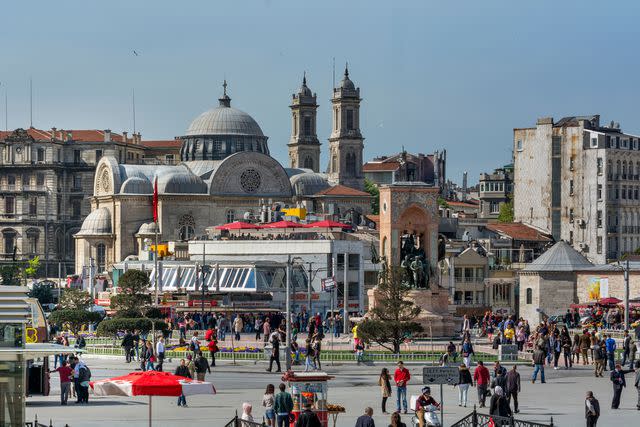
Ayhan Altun/Getty Images
Taksim Square is in the heart of modern Istanbul, perched at the end of the famous pedestrian street Istiklal Caddesi. Past meets present here; at one end you have the grand Taksim Mosque, and at the other is the modern Ataturk Cultural Center. This is where the hum of Istanbul’s activity vibrates at its highest level.
Stroll down Istiklal Caddesi.
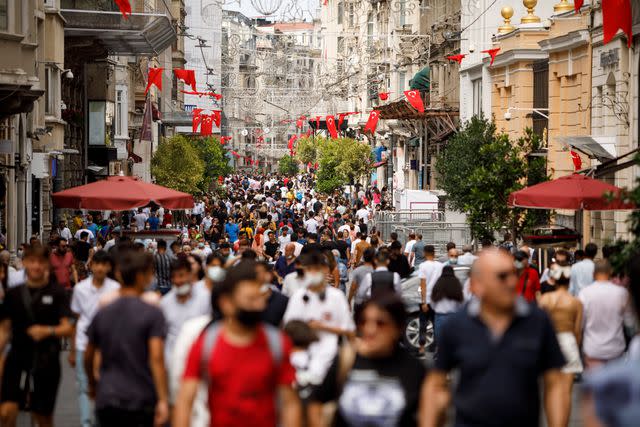
damircudic/Getty Images
Speaking of Istiklal Caddesi, this pedestrian-only walking street is the place to soak in the vibe of Istanbul. It is one of the most famous thoroughfares in the country today and is flanked by both Ottoman-era buildings and Art Nouveau and Art Deco structures. The buildings house everything from boutiques and art galleries to cafes, theaters, restaurants, and nightclubs.
Sample Turkish kebab.
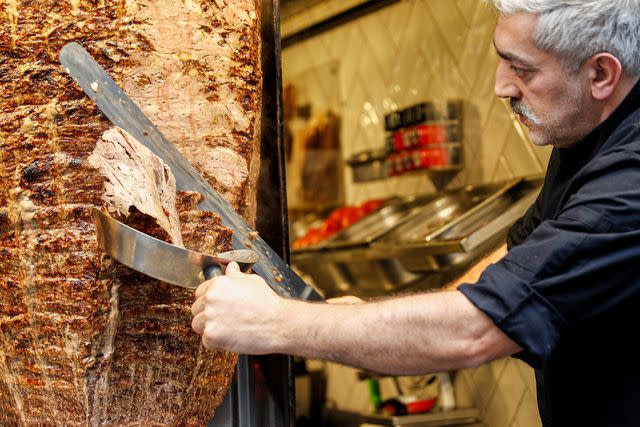
Unal Cam/Xinhua via Getty Images
Turkish cuisine includes a dizzying array of grilled meats, seafood, salads, Mediterranean and Middle Eastern spices, rich desserts, coffee, and tea. When visiting Istanbul, you will want to try as many of the above as possible, but perhaps Turkish kebab especially. Made of marinated lamb or beef, the kebab is cooked on skewers and served alongside vegetables or wrapped up in lavash bread.
Visit the Galata Tower.
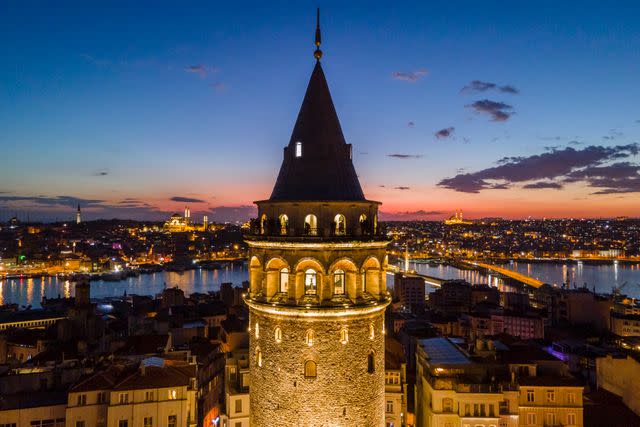
Raul C/Getty Images
Rising from the historic streets of Istanbul's Beyoglu district, Galata Tower was originally constructed as a watchtower during the Byzantine era. The structure that stands today, however, dates back to the 13th century and serves as a gallery and museum. A primary feature of the tower is a 360-degree observation deck that overlooks Istanbul.
Shop and party in Beyoglu.
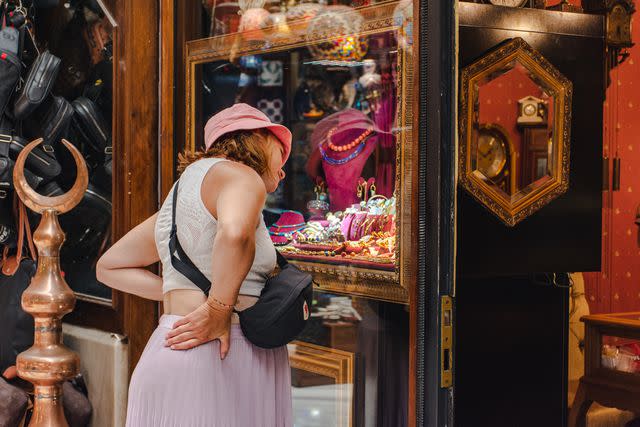
Gabriel Mello/Getty Images
"The European side of Istanbul is home to the main historic district," says Agnos. "This side of the city is considered more 'Western' and it includes nightlife spots and more cosmopolitan districts such as Beyoglu and Karakoy. Beyoglu is famous for its vibrant atmosphere; this area offers wonderful stops for shopping, dining, and nightlife."
It's likely you will spend a lot of time in Beyoglu should you travel to Istanbul. Steeped in more than a thousand years of history, the neighborhood is the beating heart of modern Istanbul on the European side of the city.
Grab a drink at Grand Hotel de Londres.
A grande dame of Istanbul, Grand Hotel de Londres is a beautifully preserved building from the 1800s. It's all about opulence here, from the rich color palette and glittering chandeliers to plush wall-to-wall carpeting. The terrace bar is a favorite hangout for tourists and locals; there's often live music here, plus beautiful sunset views over the Golden Horn.
"This is a good suggestion for travelers that have been to Istanbul," says Agnos. "It's an off-the-beaten-path suggestion for visitors to really feel the vibe of the city."
Explore Karakoy.
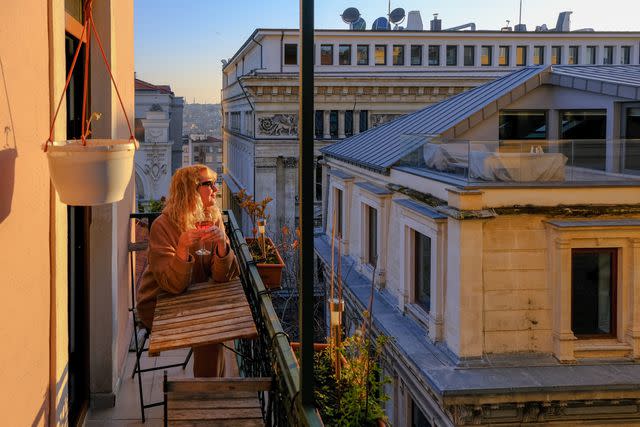
Marina Cavusoglu/Getty Images
"Karakoy, the modern name for the old Galata, is part of the Beyoglu district," says Agnos. "It is known as one of the hippest and oldest neighborhoods in Istanbul, home to arty cafes, local boutiques, cocktail bars open late into the night, and art galleries. There is a growing local fashion and art scene in this area."
Marvel at the Blue Mosque.
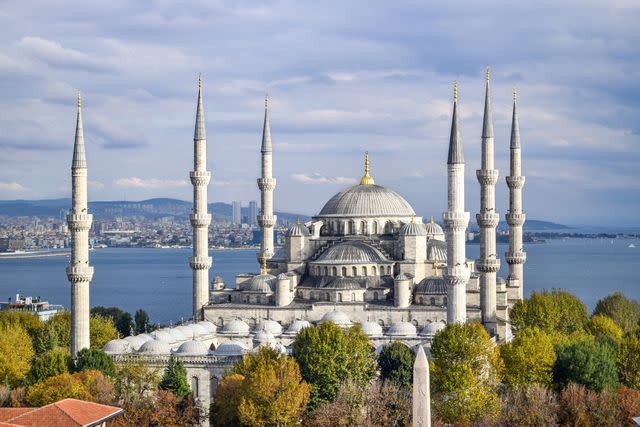
Nate Hovee/Getty Images
One of the most recognizable landmarks in Istanbul, the Blue Mosque (also known as the Sultan Ahmed Mosque) is a beacon in the city skyline. It is known for its gorgeous domes and six soaring minaret towers. The mosque dates back to the 17th century and is still a functioning mosque today.
Visit Hagia Sophia.
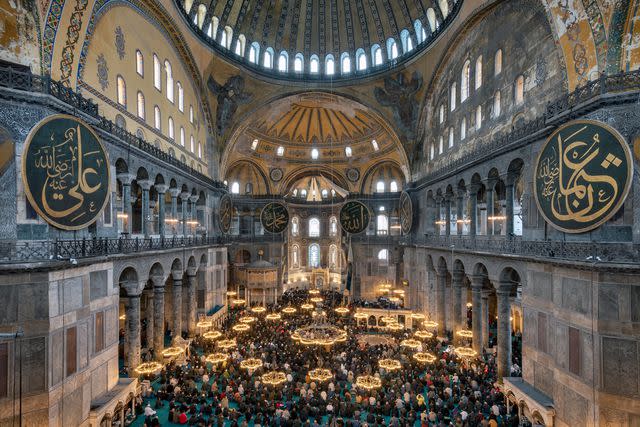
Ayhan Altun/Getty Images
Not far from the Blue Mosque is the equally impressive Hagia Sophia. Originally built as a church where rulers of the empire were crowned, it was later converted to a mosque. Today it serves as a museum dedicated to Turkey, and it remains one of the most important monuments for both the Byzantine and Ottoman empires.
Roam the Hippodrome.
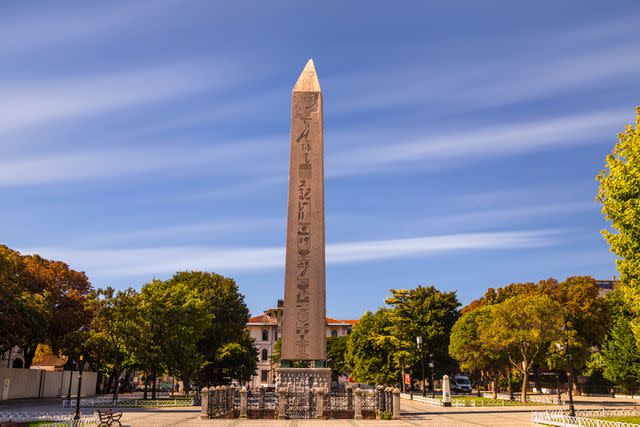
Anton Petrus/Getty Images
Back when Istanbul was the imperial capital of Constantinople, it was known for its horse and chariot racing, and the Hippodrome was where these exciting, adrenaline-pumping races took place. While the original venue is no longer around, what stands in its place is Sultanahmet Square, where several monuments serve as reminders of the area's millennia-old past.
Explore the Turkish and Islamic Arts Museum.
The Turkish and Islamic Art Museum is a revolutionary museum for Turkey, being the first in the country to showcase Turkish and Islamic artwork together. Opened in 1914, it was the last museum to open during the Ottoman Empire period. The museum has 1,700 pieces of art, and its carpet collection is among the most impressive in the world.
Journey underground at the Basilica Cistern.
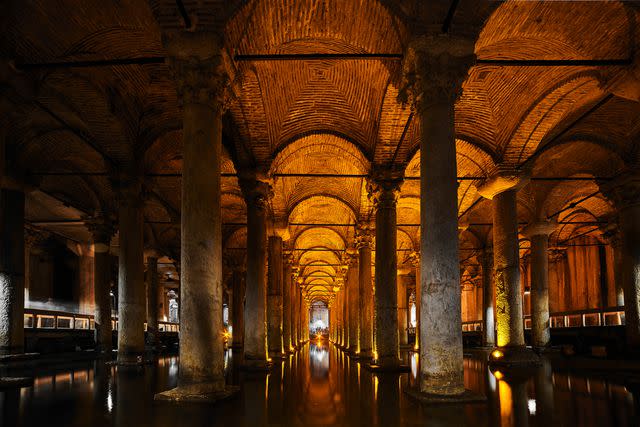
sergeyborozentsev/Getty Images
Istanbul's skyline soars with some of the world's most beautiful and historic monuments, and the beauty continues underneath the pavement, too, thanks to masterpieces of engineering and infrastructure. The primary water reservoir for Constantinople, the Basilica Cistern is cathedral-esque and a sight to see. Built during the 4th century, it is supported by 336 columns and can hold up to 17.5 million gallons of water.
Visit Topkapi Palace.
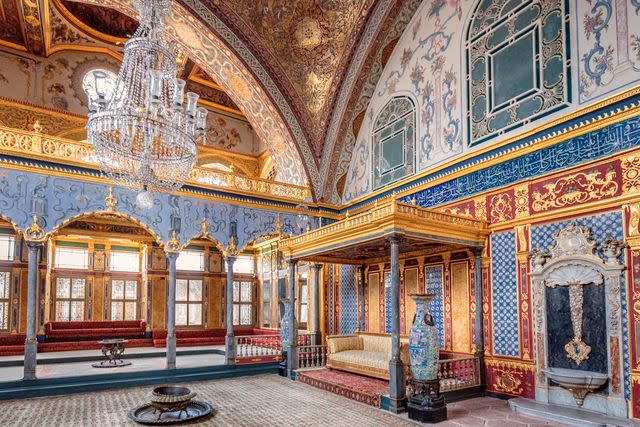
RuslanKaln/Getty Images
This 15th-century palace was once the administrative headquarters for the Ottoman Empire. Now a museum, the venue is full of treasures, from walls festooned with gorgeous paintings to rooms that give way to sumptuous courtyards — you can even explore the opulent former harem. It's one of the best places in Istanbul to learn about the former grandeur of the Ottoman Empire.
Check out the Süleymaniye Mosque.
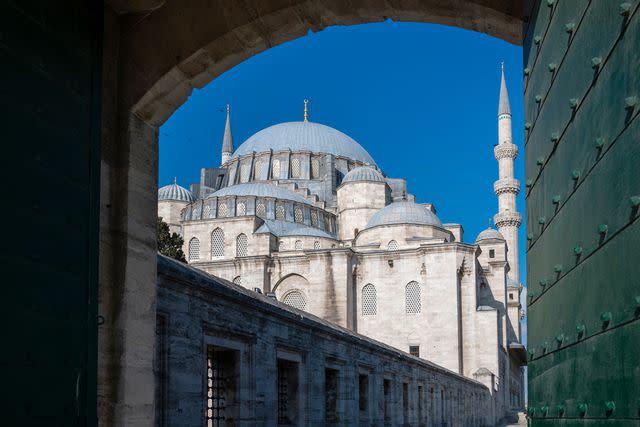
Salvator Barki/Getty Images
Istanbul is not short on impressive mosques, and Süleymaniye Mosque is certainly one of its most beautiful. Considered the masterpiece of architect Mimar Sinan, the mosque was built in the 16th century to honor Sultan Süleyman, the longest-reigning sultan of the Ottoman Empire. The central dome stands at a staggering 154 feet tall and the interior is beautifully decorated with colors of gold, green, red, and blue.
Ferry to Istanbul’s Asian side.
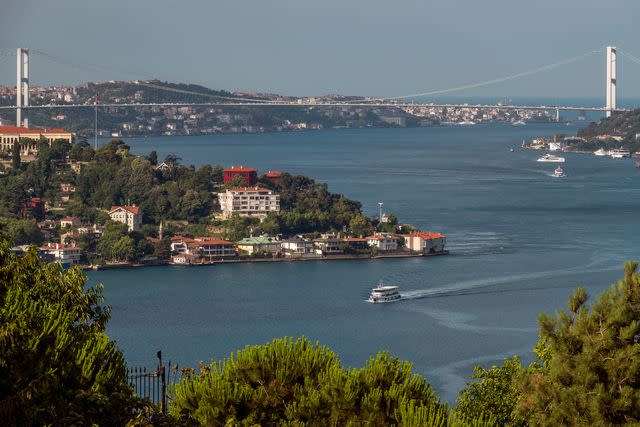
Ayzenstayn/Getty Images
Istanbul stands as an important crossroads between Europe and Asia, and the city itself is divided between the two continents by the Bosphorus Strait. Be sure to immerse yourself in both sides of this rich city in order to best understand its history. There are more than 20 ferry routes across the Bosphorus, and the crossing takes only 15 minutes.
Admire Beylerbeyi Palace.
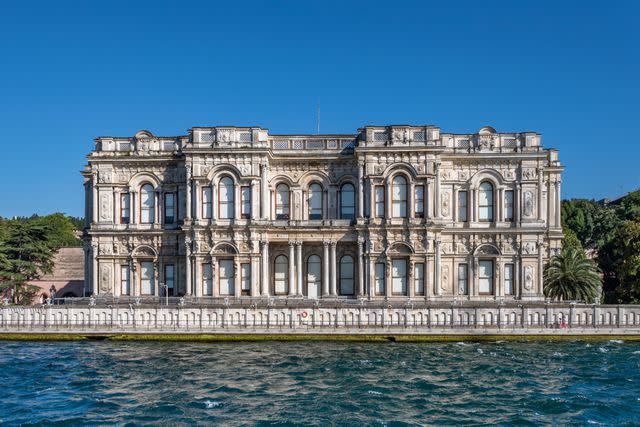
Ayhan Altun/Getty Images
Across the Bosphorus, Beylerbeyi Palace is a 19th-century estate built as a summer palace for royalty. It was also used as a residence for visiting heads of state. The now-museum is a gorgeous example of interior design and architecture, with nods to both Ottoman and Neo-Baroque styles. The stunning gardens that surround the palace are equally impressive.
Shop around Kadikoy Market.
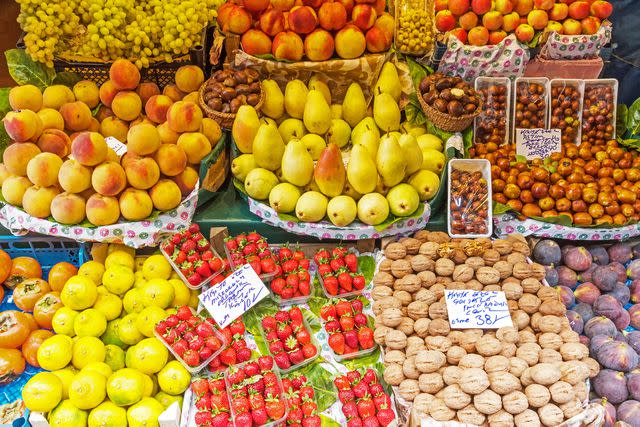
elxeneize/Getty Images
Kadikoy Market is part of a buzzy bazaar on Istanbul's Asian side. Overlooking the Sea of Marmara, the market is a historic one, home to more than 4,000 vendors selling everything from fruits and vegetables to carpets, pottery, textiles, and paintings. It is also one of the best spots in the city to sample Turkish street food and Turkish delights, a jelly candy made with rosewater.
Walk the Kuzguncuk neighborhood.
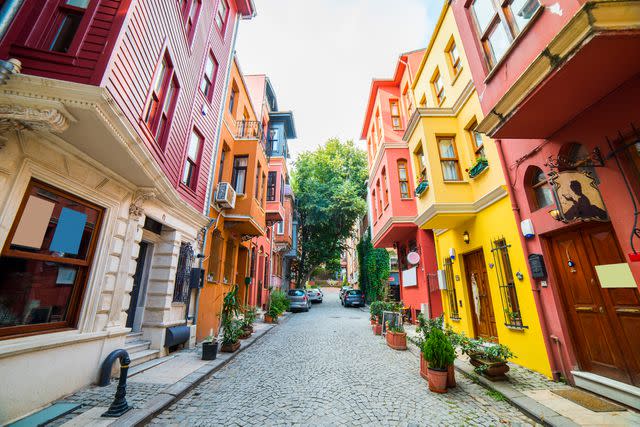
resulmuslu/Getty Images
Sandwiched between Uskudar and Beylerbeyi, Kuzguncuk is one of the most lively and vibrant neighborhoods in Istanbul's Asian side, and it has always been a melting pot of religions and cultures. You'll see mosques, churches, and synagogues here, plus the neighborhood's funky mishmash of coffee shops, restaurants, tree-lined cobblestone streets, and brightly colored historic homes.
Bargain at the Grand Bazaar.
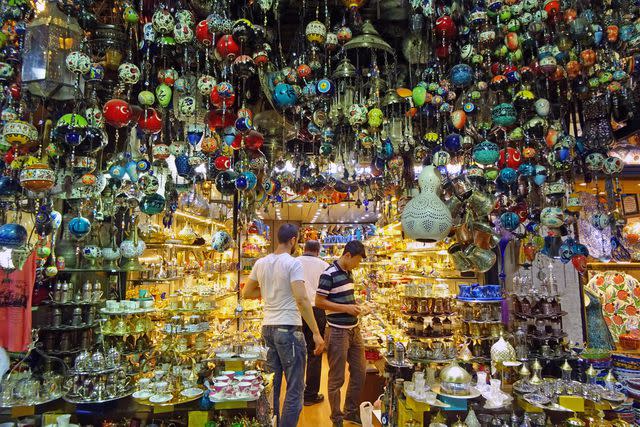
Colors Hunter - Chasseur de Couleurs/Getty Images
Prepare to feast your eyes on the granddaddy of all covered markets. One of the world's oldest and largest venues of its kind, the Grand Bazaar of Istanbul contains a maze of streets and thousands of shops. Vendors sell everything you could possibly think of, so if you're a professional at haggling, this will be like your Super Bowl.
Get a serious scrubbing at Kılıç Ali Paşa Hamamı.
Wellness has been "on trend" in Turkey for hundreds of years, and visitors can step back into the old ways of wellness with a visit to the iconic Kılıç Ali Paşa Hamamı. The building dates back to the 16th century and serves as one of the top spots in the city for a classic hamam ritual today. Remember to book accordingly — the hamam is open to women in the morning and men in the afternoon.
Visit the Monastery of Zoodochos Pege.
This early Byzantine monastery has a history of miracles and legends tied to it, thanks to a spring that is believed to have magical powers. It's also set on a hilltop, making it a great place to take in city views.
Connect with the local community.
If you like to step into the shoes of a local when you travel, you can do that in Turkey. Agnos recommends visiting the island village of Bozcaada in August to harvest and sell tomatoes with the local community. Or, if you're in Bodrum, join the olive harvest that occurs between September 15 and December 25.
Enjoy the Mediterranean climate.
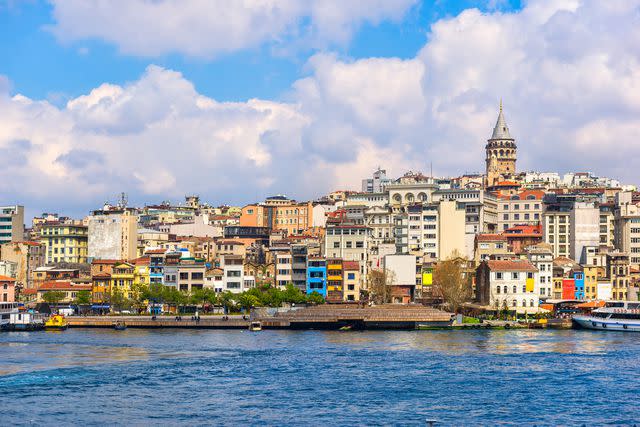
Kateryna Kolesnyk/Getty Images
Istanbul may be a cosmopolitan city, but it is surrounded by nature at every turn, with coastal views, island-style living, forests, and parks.
"There are many seaside promenades where locals walk, run, or socialize and hang out," says Dunch. "From early June to the end of September, public beaches on the Black Sea and the Sea of Marmara are open." Dunch also recommends enjoying open-air concerts in the summer, or visiting Belgrad Forest, north of the city. "Around Prince's Island," he adds, "sailing and water sports are popular."
Discover your favorite ‘esnaf lokantası’.
Istanbul has some of the top restaurants in Europe, but local, homestyle street food cafes are where the city really shows its heart.
"I recommend eating at a craftsmen's eatery," said Dunch. "They are referred to as 'esnaf lokantası,' frequented by shopkeepers and craftsmen in commercially vibrant areas, such as the markets, and they offer underrated and extremely tasty home-style cooking. This is as close as a visitor can get to the heart of Turkish cuisine."
Be entertained at Bomontiada.
The impressive Bomontiada complex is a center for the arts. There's the Ara Güler Museum, restaurants, and a calendar of outdoor concerts and movie screenings, making this the place to go for all forms of entertainment. It also happens to be housed within the once-abandoned Bomonti beer factory, and it was integral to helping redefine this formerly desolate part of the city.
For more Travel & Leisure news, make sure to sign up for our newsletter!
Read the original article on Travel & Leisure.

